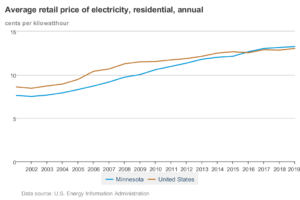How do some factors affect the energy rates in electricity?
Electricity is a very important aspect of human life. From running minor appliances in the home to bigger power loom in commercial industries, electricity is what we need. Atlanta Energy Plans often reflect the cost of constructing, financing, maintaining, and operating power facilities as well as the energy rate supply (the complex system of power transmission and distribution lines). Electricity rates in certain for-profit utilities include a capital appreciation for stakeholders and investors.

Several aspects affect the energy rate of electricity.
- Fuels: During times of high energy rate demands and when there are fuel supply limitations or instabilities due to extreme weather events and accidental damage to transportation and delivery infrastructure, fuel prices, particularly for natural gas and petroleum fuels may rise. Increased fuel prices may result in higher energy generation rates.
- Costs of power plants: Each power plant incurs finance, construction, administration, and operational expenses.
- Transmission and distribution system: The energy transmission and distribution networks that link power plants to customers incur construction, operation, and maintenance costs. It includes fixing system damage caused by accidents or extreme weather occurrences and enhancing cyber security.
- Impact on the climate: Extreme temperatures can boost demand for heating and cooling, which can drive up fuel and power rates. Rain and snow offer water for low-cost hydropower generation, and when wind speeds are optimum, wind may provide low-cost energy generation. When there is a drought or a competing demand for water resources, or when wind speeds diminish, the loss of power output from such sources can put increasing demand on other energy/fuel resources and costs.
- Regulations: Public service/utility commissioners entirely regulate electrical energy rates in certain jurisdictions, while others have a mix of unlicensed (for generators) and governed prices (for transmission and distribution).
Energy rates are sometimes higher in a specific season
The cost of supplying power varies by the minute. Most users, however, pay rates depending on the seasonal cost of power. Price changes mainly reflect fluctuations in energy demand, generation source availability, fuel usage, and power plant affordability. Summer prices are often higher because costlier generation sources are introduced to match the increasing demand.
Electricity tariffs differ depending on the kind of consumer
Residential and business users often pay the highest retail power rates since it costs more to deliver electricity to them. Because industrial clients require more power and can get it at higher voltages, delivering electricity to them is more economical and cost-effective. Electricity retail prices for industrial clients are often close to discounted rates.
The cost of electricity varies depending on where you live.
The supply of power plants and fuels, costs, and marketing restrictions all influence electricity energy rates. The yearly average retail energy price for all categories of electric utility customers in 2022 ranged from 31.35 cents per kWh in Hawaii to 9.17 cents per kWh in Idaho. Hawaii’s costs are expensive in comparison to those other states because the bulk of its power is supplied using petroleum fuels that must be imported into the state.

